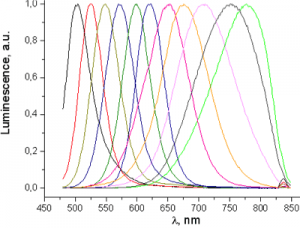Scientists at Princeton University have managed to create an extremely small laser that could have implications for the creation of quantum computers in the near future. The device draws approximately ten billion times less current than a typical light bulb and is about the size of a grain of rice. Jason Petta, a physicist at Princeton, explained, “It is basically as small as you can go with these single-electron devices.”
The “maser” (microwave laser) allows communication between two separate quantum dots. Quantum dots are essentially manmade atoms; they are very small nanostructures (containing 100 to 100,000 atoms in total) that confine electrons to a narrow region of space.
The project was intended to investigate the possibility of using pairs of these dots as qubits, the analog of bits in quantum computers. A traditional bit can only hold one of two values: a zero or a one. Qubits, however, can also be in a superposition of the two states allowing them to hold more information.
Researchers have designed the dots to release photons when their electrons transition between dots within the qubits. They placed two of these pairs six millimeters apart in a cavity made of niobium, which they then cooled to temperatures near absolute zero, causing it to act as a superconductor. When electrons started to flow, the qubits began to release photons in the microwave spectrum that were then reflected between mirrors until they formed a beam of coherent light, a laser. This is the first time a connection has been detected between two qubits at such a substantial distance.
This technology has uses outside of quantum computing, as the frequency of the laser can be fine-tuned based on the energy levels inside of the dots. Claire Gmachl, a professor of electrical engineering, praised the work of the researchers stating, “[they] dig down deep into the fundamental interaction between light and the moving electrons.” Mastery of this sort of interaction could yield new advances in lighting technology, as well as countless other fields.
Sources:
1) Princeton University (18 January 2015). Rice-sized laser, powered one electron at a time, bodes well for quantum computing, Science Daily, retrieved from www.sciencedaily.com/releases/2015/01/150115142353.htm
2) (18 January 2015). Quantum Dot, Science Daily, retrived from http://www.sciencedaily.com/articles/q/quantum_dot.htm


Leave a Reply